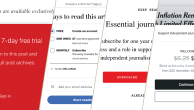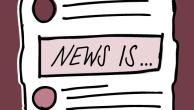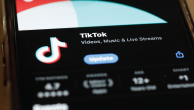Findings
The Internet was not a primary resource for news or outreach for most Americans after the terror attacks, but it was a helpful supplement to TV and the telephone and many found it useful for expressing their sorrow and anger at the assault
Americans, including Internet users, relied mostly on TV for their news and the phone primarily for their communication needs in the days following the terror attacks on the World Trade Center in New York City and the Pentagon. But for many online Americans, the Internet played a useful supplemental role as a communications tool – through their use of email and instant messaging – and as a news source.
The general picture of many Internet users that emerges in the aftermath of the attack is that they were aggressively using all the means at their disposal to get information about the unfolding crisis and make contact with their networks of loved ones and friends. That meant they were anxious consumers of TV news and restless users of the telephone even more than they used online tools.
In addition, many Internet users were highly active in their communities in responding to the attacks.
There were increases in some online activities in the wake of the tragedy, perhaps the most notable of which was the greater proportion of Internet users posting and reading comments from other Americans about their emotional response to the attacks and the ways America might retaliate.
Some 81% of all Americans say they got most of their information from TV and there was no statistical difference between Internet users and nonusers in their reliance on TV news. About 11% of Americans say they got most of their information from radio and again there is no difference between the responses of Internet users and nonusers. Only 3% of Internet users say they got most of their information about the attacks and the aftermath from the Internet.
Americans are eager for contact and reassurance
In the two days after the terror attack, three quarters of all Americans (74%) reached out to loved ones and friends by the phone or by the Internet. Some 82% of Internet users used the phone or email to make contact with people they care about in the first 48 hours after the attacks.
On the day of the attack, 51% of American adults phoned family members and 40% phoned friends about the crisis. About a quarter of Americans (23%) tried to reach someone to try to find out if she or he was safe. Internet users were more likely than non-Internet users to be using the phone to reach out to potential victims.
On that same day, more than a seventh of Internet users (15%) sent email about the crisis to family members and 12% sent email to friends. More women did this than men. In addition, 6% of Internet users sent instant messages to someone on Tuesday, which is about the same level of use of instant messaging that takes place on any given day online.
There has been a large-scale outpouring by tens of millions of Americans who have personally responded to the crisis
Even before Friday’s National Day of Mourning, many Americans had an instantaneous urge to respond personally to the crisis. In the two days after the attack, a third of all American adults (32%) hung a flag outside their homes. That amounts to approximately 60 million adults who flew the flag. A fifth of Americans (19%) attended a religious service and that amounts to about 35 million people. Some 16% of Americans, or about 30 million people gave a donation. More than a tenth of the public (11%) tried to give blood, which comes more than 18 million people. And a similar proportion (11%) went to a meeting to discuss the attacks. Of course, this does not include the extraordinary events that took place on Friday, which saw many millions of Americans attend memorial services, perform candlelight vigils, and mount other displays of patriotism.
Internet users were more likely than nonusers to display some kinds of emotional and civic engagement with their country. Online Americans were among the most fervent to attend meetings and attempt to donate blood.
Millions cancel their travel plans
About 9% of Americans say that in the first two days after the terror attacks they cancelled some travel plans. That suggests more than 15 million have already changed significant parts of their schedules in the wake of the attacks.
There was much heavier use of news sites online in the days after the attack, but the overall size of the online population was slightly smaller than usual
In the months we have followed the online population, we usually find that between 55% and 58% of Internet users are online on any given day. On this past Tuesday and Wednesday, 51% of Internet users were online. It is probably the case that many Internet users like other Americans decided to follow the events on television. At the same time, those using the Internet spent a bit more time online than is usual.
Compared to an average day, a far greater number of Internet users than normal tried to go to online news sites. Overall, 36% of Internet users went online looking for news in the first two days after the attacks. On Tuesday alone, 29% of Internet users – or more than 30 million people – sought news online. That is one-third greater than the normal news-seeking population on a typical day online. (About 22% of Internet users get news online on a typical day.)
Still, it is important to stress that Internet users were just like everyone else in the population in their devotion to getting most of their news from television.
The virtual town square
In the 48 hours after the crisis, 13% of Internet users “attended” virtual meetings or participated in virtual communities by reading or posting comments in chat rooms, online bulletin boards, or email listservs. That is substantially greater than normal. On a typical day only 4% of online Americans visit chat rooms. After the terror attacks, Internet users were doing everything online from grieving, to comforting each other, to having reasoned discussions about policy options, to having flame wars where emotions ran high and insults were exchanged. Online communities were an emotional, spiritual, cerebral, primal, and sorrowful place for Americans to sort out their feelings and hash out their views.
The Internet was a backup for some whose phones didn’t work well
More than 70 million Internet users tried to make phone calls to family members and friends on the day of the attacks. More than a third of those Internet users who tried to place calls on Tuesday (35%) had trouble getting through to people they tried to contact by phone and a fifth of them turned to the Internet to make contact with loved ones and friends. That comes to between 4-5 million people who turned to the Internet because the phones weren’t working well enough for them.
Many Internet users had problems in the early hours trying to reach the Web sites they tried to access
Some 29% of Internet users tried to get news of the crisis online on the day of the attacks – that constitutes about 30 million American adults. About 43% of them said they had problems getting to the sites they wanted to access. Of those who had trouble, 41% kept trying to get to the same site until they finally reached it; 38% went to other sites, 19% gave up their search. Many news sites recognized this problem quickly and redesigned their pages to strip out graphics, ads, and other features that would make their pages time-consuming to download.
A high proportion of Internet users were actively surfing to get all the information they could about the crisis; 58% of those seeking news online were going to multiple Web sites in their hunt for information.
Many Internet users were multitasking their way through the crisis
A quarter of Internet users were multitasking on Tuesday by having the TV or radio on while they were surfing or sending email.
The final assessment: For some, the Internet was a help
Some 30% of Internet users say the Internet helped them learn about what was going on in the first days after the attacks occurred and 29% say the Internet helped them connect with people they needed to reach.
More analysis from the Pew Research Center For The People & The Press
[Update: You can read the report at http://pewresearch.org/pewresearch-org/politics/report/3/american-psyche-reeling-from-terror-attacks]




